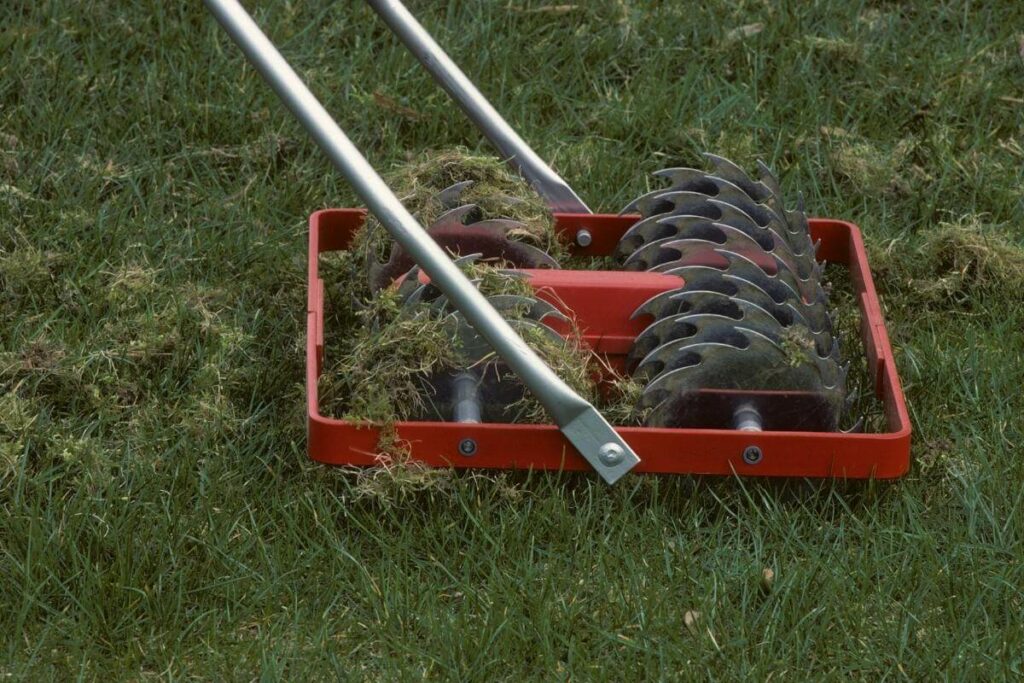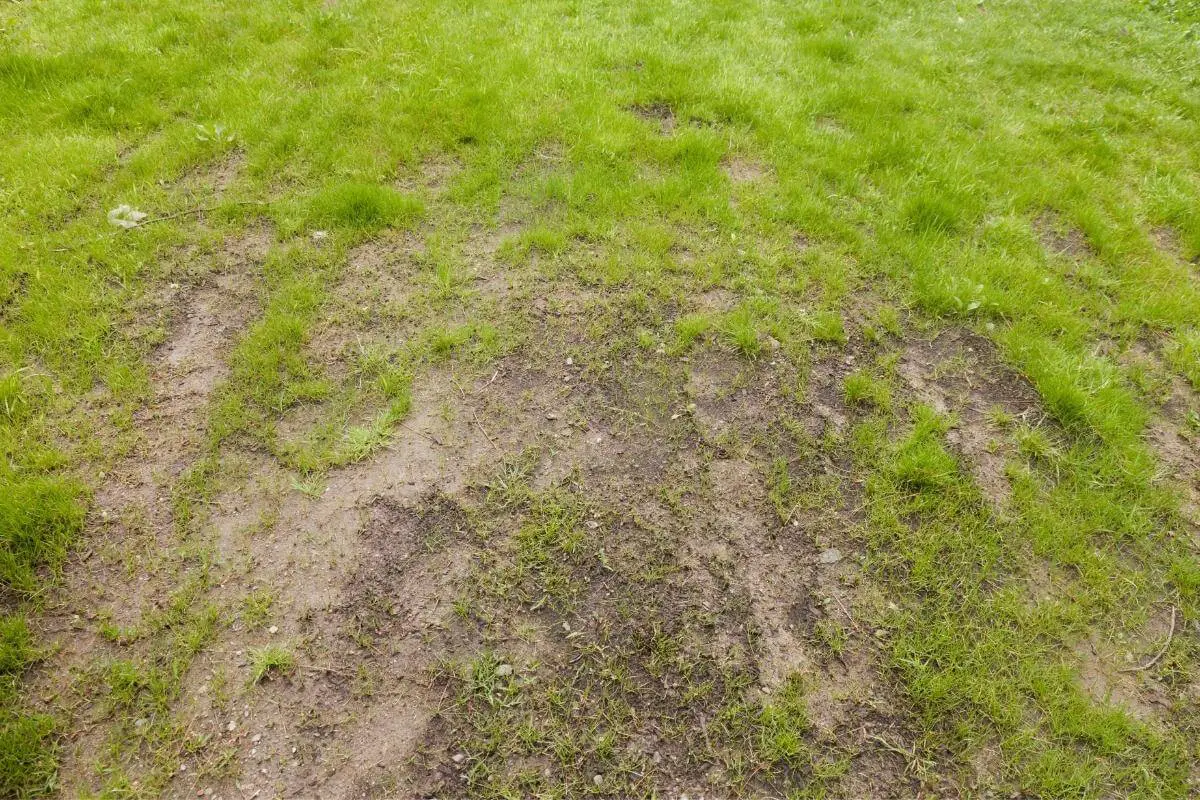Have you tried everything to make your grass look better, but no matter what you try, nothing works?
Don’t worry, it’s nothing you’ve done, but you probably have high quantities of clay in your soil.
How can you improve grass on clay soil?
To improve grass, you have to improve the soil first. Clay becomes very compacted making it difficult for plants to grow in. By adding organic material and aerating the soil, you can improve your grass.
What Is Clay Soil?
Before we take a look at how to improve your lawn, you should know why clay is difficult to work with.
There are three sizes of ‘dirt’; sand, silt, and clay. Clay is the smallest of the three, which means it packs in tighter than the other dirt types.
When soils are that tight, it leaves no room for the necessary water, nutrients, and oxygen in the soil.
By improving your clay soil, you can avoid:
- Compaction
- Poor drainage
- Fungus
- Moss
- Poor nutrient availability
- Root stress
How Do You Know if You Have Clay Soil?
The best way to check to see if you have clay soil is by doing a soil test.

You will need a soil test kit and soil samples from around your lawn that were gathered with clean gardening tools.
If you want a less formal test, grab a small chunk of moist dirt and rub it between your fingers. If it’s gritty, the soil has high quantities of sand and you don’t have clay soil.
If it’s smooth and sticky, it is mainly clay.
What Next: Turn that cylinder into a ring by attaching the edges together. If it didn’t fall apart even after being manipulated that much, you have high levels of clay in your soil.
1. Pick the Right Grass Seed
All plants have a preference when it comes to soil.
Some like soils that have lots of drainage, some like having moist soil all the time, some plants like lots of organic matter, and some don’t.
Grass grows everywhere, but are you surprised that there are different types of grass with soil preferences?
The best overall grass seed is Tall Fescue. It’s an incredibly strong, deep-rooting grass that can tolerate droughts, sun, shade, warm weather, and cool temperatures.
If you live somewhere that doesn’t see colder temperatures, another option for you is Bermuda Grass.
This grass grows deep and grows quick, and will even fill in bare spots.
These are the other types of grass that will grow better in clay soil:
- Buffalo Grass
- Kentucky Bluegrass
- Perennial Ryegrass
- Red Fescue
- Zoysia
2. Use Fertilizer
The best way to improve your grass is to improve your clay soil, and the best way to do that is to fertilize the soil with organic material.

Fertilizing should be used in addition to the other method on this list to help improve your soil.
Is Fertilizer for the Ground or the Plants?
Technically the answer is both.
Organic material fertilizer adds bulk to the clay soil to help break it apart. This helps with drainage and prevents the clay from becoming compact.
Since the soil is broken up, there is more space for oxygen and air for the roots to absorb which will lead to a healthier lawn.
Organic material will also provide nutrients for worms, bugs, and microorganisms.
As these small creatures move their way through the soil, they give even more room for oxygen and water.
Top Dressing
If you have existing grass, top dressing will be the easiest way to apply organic material compost.
There’s a lazy way to do it that takes a while for the fertilizer to have any effect on the soil, or there’s a way that involves more effort, but has an immediate effect on the soil.
- The Lazy Way: Spread a layer of compost on top of your grass. Rake it out so it’s about an inch thick. Not only is this not going to make your lawn look good, but it can take over a year for the nutrients in the compost to enter the soil.
- The Right Way: Top dress after core aerating your soil (coming up soon!). The compost that you add to the top of the soil will fill all the spaces left behind during core aeration. Spread the compost with a rake until you have a ¼ inch layer.
Tilling
Tilling clay soil isn’t for the brave of heart, and if you try tilling your clay soil when it’s wet you can end up making it worse.
It is, however, a great method if you don’t have a lawn yet.
Get yourself a rototiller (trust me, you are going to want a machine to do the heavy lifting) and run it over the entire area you want to plant grass.
After you’ve done a quick pass, add several inches of compost over the entire area and repeat the process.
For The Persistent: If your soil is still compact, add more compost and till the soil again. When you have finished, remove any rocks that were turned up, and smooth the area with a rake.
3. Core Aeration
This is the method that works great with top dressing.
Whether you use a hand tool, a lawnmower adapter, or a core aerating machine, you will end up pulling cores out of the lawn.
These cores look like long skinny wine corks, and after they are pulled out of the ground they sit on top of your soil.

If you pair these holes in your lawn with the fertilizer, you are giving the soil direct access to the nutrients in the compost.
Core aeration will also help improve your grass, even without fertilizer.
Those spaces you created in the soil allow air and water to penetrate below the surface which will help the microorganisms and the root systems.
4. Liquid Aeration
Liquid aeration has a similar effect as core aeration, but without creating holes in your lawn.
Liquid aeration uses a wetting agent that loosens the bond between the clay particles so that there is space for water and oxygen.
There are quite a few benefits to liquid aeration:
- It’s easy: Carrying and using a spray bottle or sprayer is a lot easier than pushing a machine or using hand tools.
- It’s accessible: You can buy the liquid solutions online and have them delivered to your house. There’s no need to read up on how to use fancy equipment like a rototiller either.
- Better coverage: You can apply the wetting agents to every inch of your lawn, something that core aeration can’t do.
- You can do it at anytime: If you have an existing lawn, or if you have a field of clay soil you can add the wetting agent on top. You can also apply the solution in any weather or season and you don’t have to wait for ‘better conditions’.
Final Thoughts
Improve the clay soil to improve the grass. It’s that easy… but it will be a lot of work.
For the best results, start completely fresh. Till organic compost into the soil, then add your liquid aeration, top dress with more compost, and pick a grass seed that can handle your lawn.
If you already have grass growing on your lawn, try a combination of some of the less disruptive methods, like liquid aeration.
You May Also Read
- How To Store Fertilizer (Garden Fertilizer Storage Methods)
- Where to Place a Compost Tumbler
- What Is Black Bag Composting?
